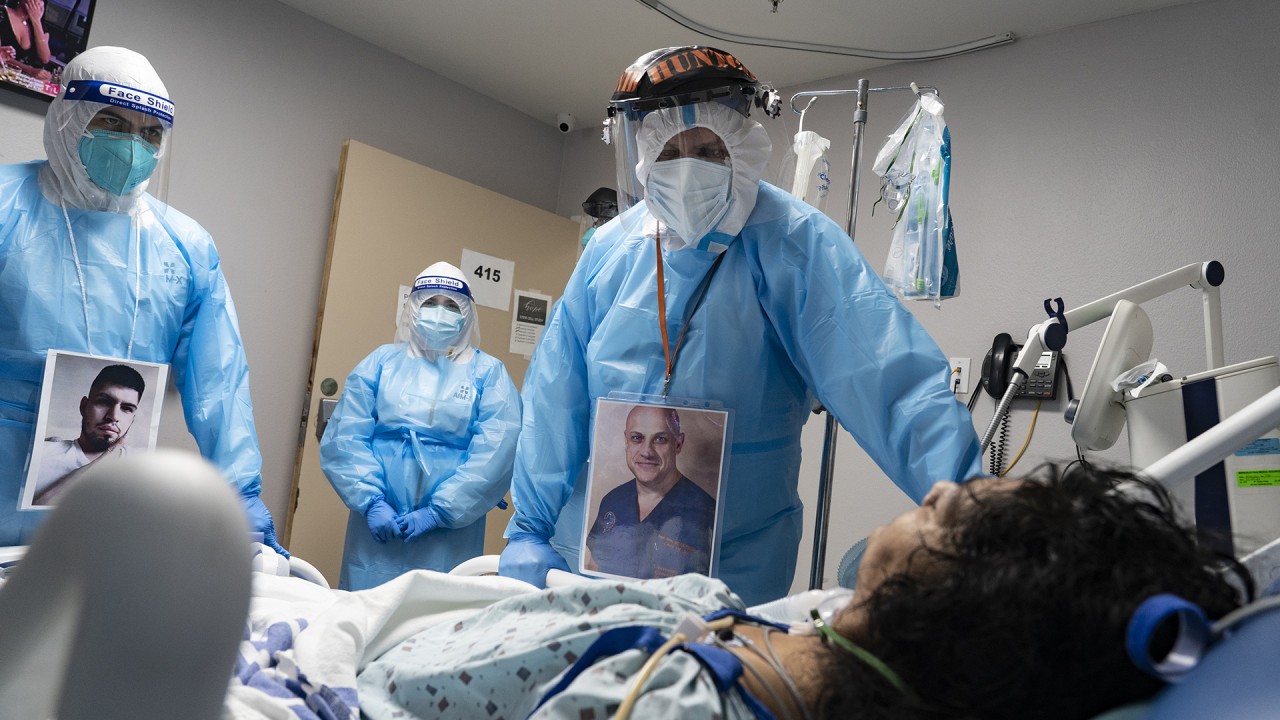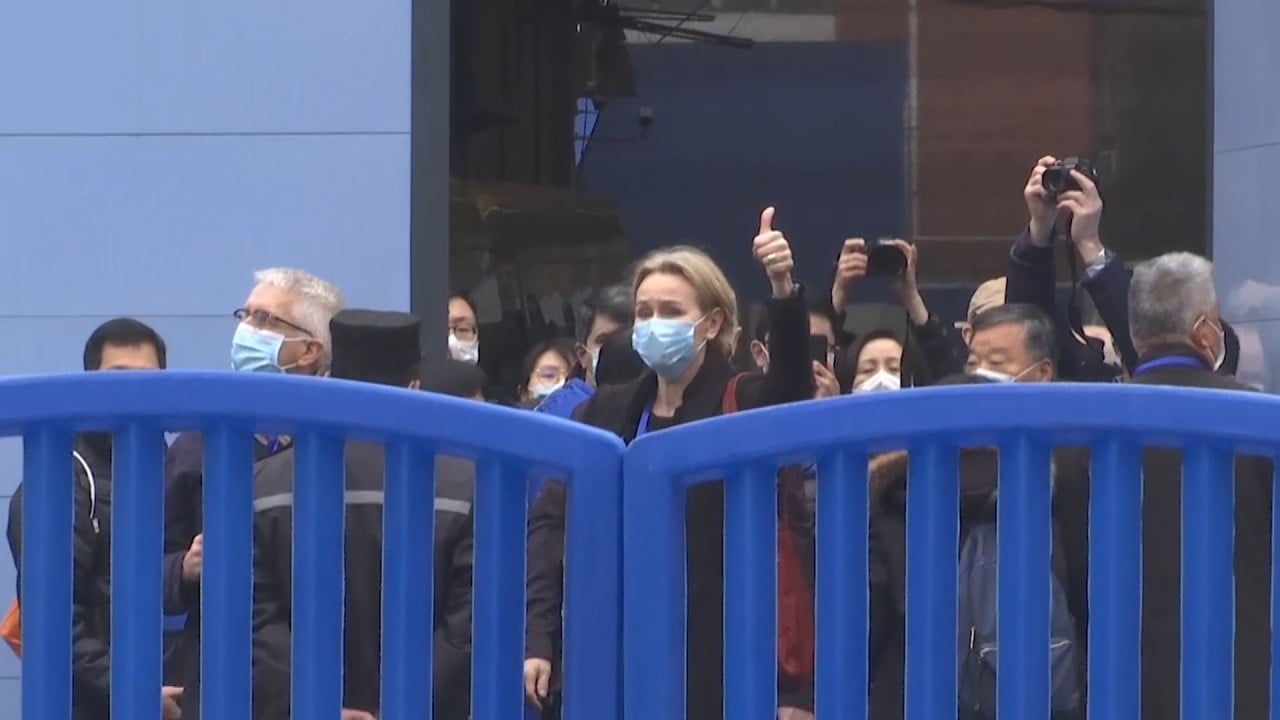
China vs the WHO: where to look next in the hunt for Covid-19’s origins
- Beijing says the search must be expanded to countries and regions around the world
- The World Health Organization’s proposal includes investigation of the lab leak theory
For China, the road ahead is clear.
“We should not limit our field of vision to a single place, but expand it, and carry out multi-country, multi-place origins tracing worldwide,” said Wang Chen, director of the National Centre for Respiratory Medicine.
China accuses WHO of ‘arrogance’, ‘disrespect’ over return to lab leak theory
The panel called for global bat and animal testing to hunt for traces of the pathogen, as well as more research into potential early Covid-19 cases from around the world.

04:46
Seeking the invisible: hunt for origins of deadly Covid-19 coronavirus will take scientists to Wuhan
It is a view that sidesteps international calls for continued focus on research in China, where the first cases of Covid-19 and the closest known animal virus were identified.
Beijing’s position is partly founded on a handful of reports from Europe and the Americas that suggest the virus could have been spreading there prior to or around the same time as its first reported detection in Wuhan in December 2019.
But the value of those cases has yet to be determined, researchers say.
“There needs to be an investigation into all the signals around the pandemic,” said epidemiologist Raina MacIntyre, a professor of global biosecurity at Australia’s University of New Wales, pointing to European reports. “It’s possible there was some very mildly contagious version of [the virus] in Europe.”
‘It’s not a blame game’: WHO calls for all countries to help in Covid-19 origins hunt
Many scientists say such studies, if accurate, simply suggest earlier spread of the disease from China, which is a known hotspot for the bat viruses thought to have originated the pandemic strain. Others caution about the quality of the data, in particular the potential for false positives with historical blood testing.
“Serological signals are not very specific, meaning that you can get false positives because antibodies cross-react to each other,” said Maciej Boni, an associate professor at Pennsylvania State University’s Centre for Infectious Disease Dynamics.
He said it was unlikely that there were pockets of spread in Europe during this period before Wuhan’s outbreak without seeing a similar increase in hospitalisations.
A recent effort to confirm a controversial Italian study suggesting patients had Covid-19 antibodies as far back as September 2019 was inconclusive, after researchers in the Netherlands looking to verify the data with a different testing platform turned up largely different results. They did not find any virus antibodies in September samples, unlike the Italian team, who said their findings “do not at all suggest that the virus originated in Italy”, but indicate the virus was spreading in China before the first known cases and brought overseas by travellers.
Infectious disease specialist Daniel Lucey of Georgetown University in the United States said that overall the reports of earlier spread needed to be addressed “sooner or later”.
“But from a scientific point of view, it’s still extremely likely that the virus originated in China, and that’s what should be prioritised,” he said.

01:51
WHO team probing coronavirus origins in China visits Wuhan wet market at epicentre of virus outbreak
WHO director general Tedros Adhanom Ghebreyesus has been trying to keep the focus on China.
In comments this month about the next phase of the mission, Tedros stressed the need for more research from China, calling on Beijing to give more data from the early phase of the pandemic as well as more for tracing of animals at wet markets in Wuhan.
He also said the theory the virus could have emerged from a lab studying similar viruses was “prematurely” minimised by the previous probe to the city and called for investigation of laboratory facilities.
But Chinese deputy health minister Zeng Yixin said on Thursday there was “no way” China could accept the inclusion of the lab leak theory, which the earlier mission deemed an “extremely unlikely” pathway for the virus to have emerged from.
Officials said that China had done and was continuing to do significant work to trace the virus, but it was time to ramp up work elsewhere.
The publicly available outline of the WHO’s proposal also leaves the door open for research around the world, with no geographical limits on most of its recommendations.
And a previous WHO-led mission to Wuhan also called for bat studies in Southeast Asia and for further investigation of the European studies, which it described as “not confirmed” and “not standardised”.
China’s Covid origins snub shows limits to World Health Organization’s power
China has yet to publish any information about whether it has conducted similar testing of stored blood samples from the autumn of 2019, which could shed light on when the virus appeared in its population, but announced Thursday that preparations were under way to test stored samples from Wuhan.
For some, like virologist Nikolaus Osterrieder, continuing studies involve constant reassessment.
“You need to start somewhere and be guided by your results,” said Osterrieder, a professor in the department of infectious diseases and public health at City University of Hong Kong.
“The proximity – the evidence that the most closely related sequences to [the virus] are from [bats in] China – would suggest that it originated from this part of the world,” he said.
If compelling evidence of the pathogen or its direct ancestors is found in animals in China through more research, “you may not look any further. But if you didn’t find it, you need to reconsider, then maybe we look further south or west, in other parts of the region,” he said. “It’s a formidable undertaking to try to find those missing links.”

04:09
Chinese respiratory disease expert on origins of Covid-19 and Wuhan virus lab conspiracy theories
On Thursday, epidemiologist Liang Wannian, who led the Chinese team on the earlier WHO origins investigation, said it was time to “expand the scope” of research to anywhere that bats were distributed, since more such research had been done studying viruses in these animals – thought to be the originators of the virus – in China than elsewhere.
He also said a top priority should be studies focusing on the evolution of the virus in animals, including the potential role of an intermediary host animal, which could have passed the virus from bats to humans. The earlier WHO investigation said it was “mostly likely” the virus spread in humans via this route.
China has tested several tens of thousands of livestock and wild animals across the country, including stored pre-pandemic samples, according to Liang, though none came back positive.
While such broad testing across species and provinces could turn up a lucky lead, scientists outside the country have said that this strategy may not be focused enough to find a virus that is only circulating in a specific population of animals.
A joint report written by the Chinese and international researchers after the earlier probe called for specific testing at wild animal farms that supplied Wuhan’s markets and were in areas known to harbour bats with related viruses, such as in the southwestern province of Yunnan.
Liang did not say whether this work had started, but said Chinese scientists had continued their research on animal hosts and examination of the market supply chains were “valuable”.
“We are also expecting that scientists around the world will do this work, focusing on natural evolution and animals,” he said.
Other scientists, including those that were part of the first phase of the WHO mission, also called for further study of bats in Southeast Asia, where several closely related viruses have also been detected but less study has been done.
While scientists broadly support more global sampling to prevent future outbreaks, they say all known evidence suggests that the most closely related viruses will not be further afield.
Veterinary pathologist Andrew Cunningham, a professor at the Zoological Society of London’s Institute of Zoology, was part of a team that recently detected the first Sars-related coronavirus in Britain. But Cunningham said related viruses detected outside China and Southeast Asia had only been more distantly related to the virus that causes Covid-19.
“Therefore, all evidence currently points to the China and Southeast Asia region as the most likely area where the progenitor or progenitors of [the virus] occur.”

